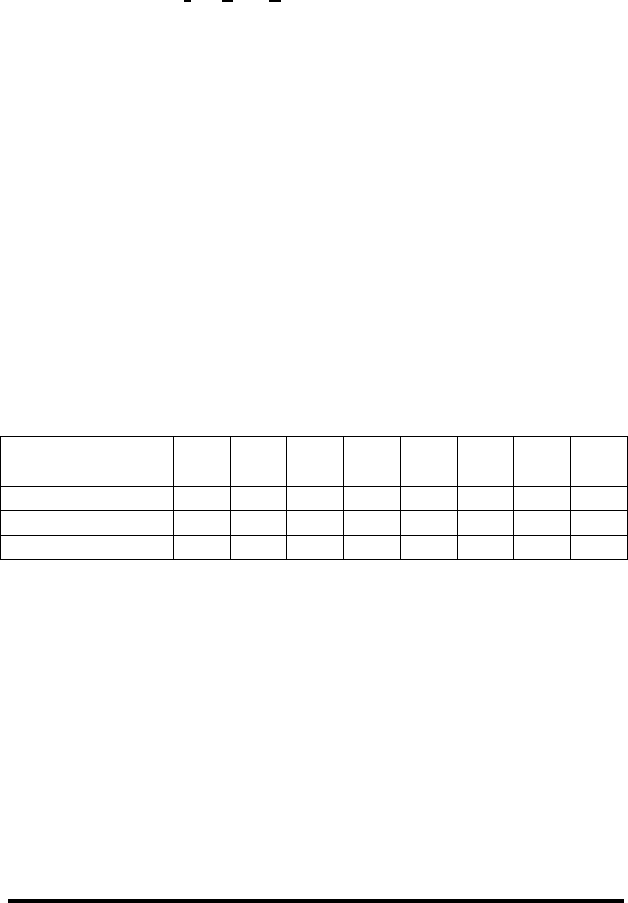User Guide

232DRIO-0308 Manual 11
B&B Electronics -- PO Box 1040 -- Ottawa, IL 61350
PH (815) 433-5100 -- FAX (815) 433-5104
used to specify which command will be executed by the
controller,either the “R” or “S” character. The set output command
requires one argument field (for normal environments) or two
argument fields (data and its complement for harsh environments).
This field contains the fourth and/or fifth data byte.
Command Syntax: ! or # 0 _ _ _
| | | | |
| | | | |
| | | | ~Data Byte
| | | Data Byte
| | Command Byte
| Address Byte
Start of Message Byte
I/O Data Bytes
When constructing commands to manipulate output lines or
when reading the state of the I/O lines it is necessary to know how to
select and interpret the I/O data byte. The three I/O lines are
represented by one data byte.
A byte represents an eight-bit binary number (11111111),
therefore each byte can represent eight I/O lines. Each bit is
assigned a bit position and a weight (value). Refer to Table 3.3.
Table 3.3 – Bit Assignments for I/O Lines
Input → I #
Relay → R #
X
X
X
X
X
I
#1
R
#2
R
#1
Bit Position
7 6 5 4 3 2 1 0
Hex Weight
80 40 20 10 8 4 2 1
Decimal Weight
128 64 32 16 8 4 2 1
To set an output to a HIGH state the corresponding bit position
must be set to a "1". Conversely to set an output LOW the
corresponding bit position must be set to a "0". When reading I/O
lines, any bit set to a "0" indicates the corresponding I/O line is in
the LOW state and any bit set to a "1" indicates the corresponding
I/O line is in the HIGH state.










